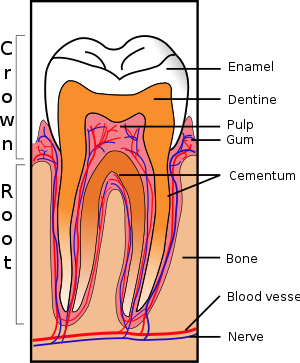A recent study by Givol,
Rosen, Taicher & Tsesis, published in the Journal of
Endodontics, points out some interesting facts about malpractice claims
in endodontics.

Image via Wikipedia
Endodontic claims are the most frequently filed
malpractice claims in dentistry. It has been reported that there are
twice as many endodontic malpractice claims than other specialty areas.
Endodontic claims have been reported to be 14% – 17% of the total
malpractice claims in dentistry.
The study by Givol et. al. was a
review of malpractice claims made in Isreal between 1992 – 2008. Some
interesting data comes from this review. Of the 720 complaints that were
analyzed, 72% were considered “justified” and 27% were considered
“unjustified” complaints.
Errrors found and analyzed were
categorized as pre-operative, intra-operative or post-operative.
Most
of the errors occurred in the intraoperative phase of treatment. These
included access preparation, detection of canals, instrumentation or
filling.
Swelling & pain as the only complaint were reported
in 100 cases and none of them were considered “justified” complaints.
Swelling and pain are considered a side effect of treatment and not a
complication. Patients should be informed of this possible side effect
during informed consent. It has been reported by Tsesis et. al. that
pain and swelling can occur following endodontic treatment in 1.5% – 20%
of cases. Helping patients understand this possible side effect can
help prevent misunderstanding and hopefully prevent unnecessary
malpractice claims.
The lack of adherence to strict treatment
protocols resulting in poor quality treatment was a common cause of
malpractice claims.
Endodontic treatment requires exceptional
technical skill and strict adherence to accepted treatment protocols.
Proper case selection and appropriate referral to a specialist can also
prevent unnecessary complications.











